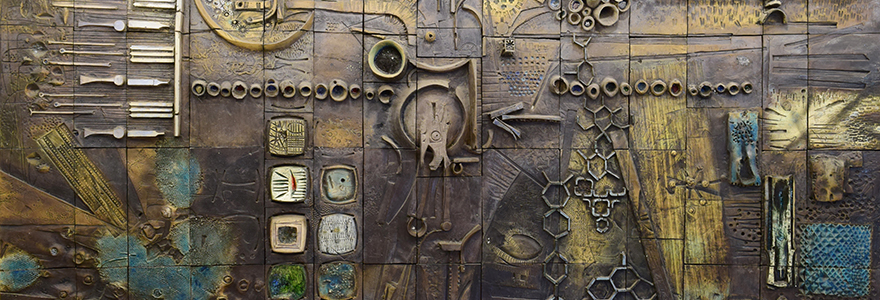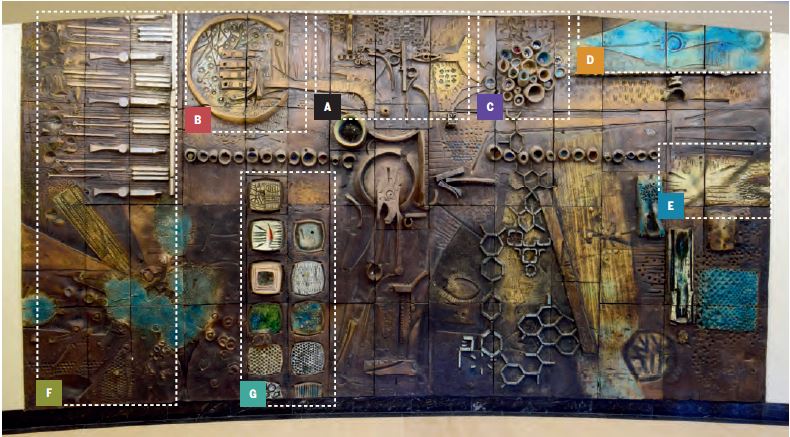The Searcher, the Scientist
By Crystal Mackay, MA'05
You’ve walked by it a hundred times on your way to class, the office, clinic or lab. The textures on the curved clay mural form abstract images in brown and blue – a cluster of hollow cylinders, a row of patterned cubes and a string of hexagons cascading down the wall.
But if you’ve ever taken a moment to stop and look a little closer, you might have seen some aspect of yourself reflected back at you, a symbolic representation of your education or research.
Titled, “Man – the searcher, the scientist,” the mural that adorns the main lobby of the Medical Sciences Building at Western University was commissioned in the early 1960s and was created specifically for
“A lot of the imagery that we see in that mural is based on Bonet’s trips through the labs here at Western,” said James Patten,
The work is described by Bonet himself as largely symbolic, representing the function of the building and the spirit of its teachers and researchers.
Bonet was born in Barcelona, Spain in 1932. A product of the Spanish Civil War, he lost an arm at the age of seven. After immigrating to Canada in 1954, he quickly rose to fame producing more than 100 murals across Canada and internationally, most notably in places like Montreal’s Place des Arts and New York City’s John F. Kennedy International Airport. The work is very reflective of
Using wrenches, hammers and nails, Bonet created a series of bas-relief and high-relief sculptures on 62 clay tiles to form the completed mural. The pieces were shipped from his Montreal studio to London in 1965 when the Medical Sciences building was still under
own team.
“Having public art is very important to the University community, it enhances campus life, it provides us with new ways of experiencing the world,” said Patten. “Art opens up a space for questions and thinking that isn’t necessarily determined by other systems of knowledge.”
Mural Legend
A. In the centre are two abstract figures, both a man and a woman meant to symbolize humankind’s creative power.
B. The image of the hand in a circle of flowers represents humankind’s beauty, tenderness and sensitivity.
C. The outgoing projections to the right of the man’s profile represent the contrasting aggressive aspect of human nature.
D. An outlined horizontal figure shows a human frame, the main object of the research.
E. On the right-hand side, sculptor’s tools are lined up to look like surgical instruments – a transposition that is meant to show both the art and science of medicine.
F. On the left side of the mural are representations of medical knowledge of the time, a representation of the nervous system of the eye, and at the bottom, an abstract representation of cellular structures. The Spanish inscription in the lower left-hand corner reads, “A mi padre, medico” or “To my father, a doctor,” a nod to Bonet’s own father who was a physician.
G. These boxes represent the unknown. “So far only imagined by humans and waiting to be discovered and released.”










